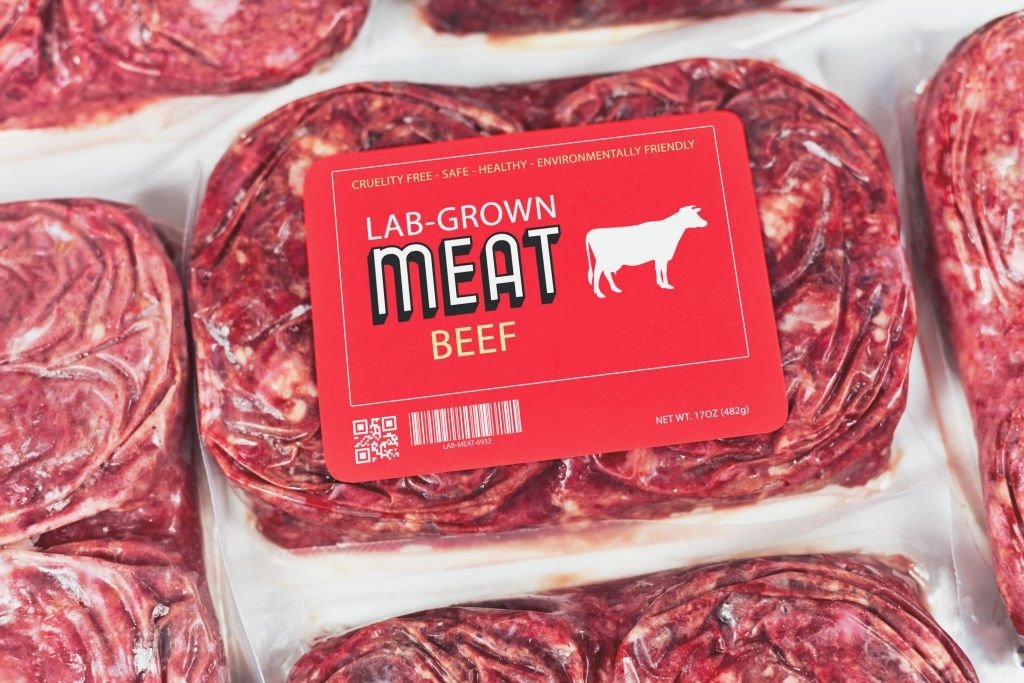We are now far away from primitive times when plant identification and hunting were essential for human settlements. Then, there were rituals and knowledge about the seasons, the local species, and nature. And we’re still far away from the beginnings of agriculture when domestication of animals and plants were still developing into fitting the requirements of civilization and trade. In history, society developed systems that industrialized production to a level that would feed the masses and create jobs, with contracts and salaries. We call progress because it lets us grow as a nation in several ways. But now, we face different problems and necessities, so there are questions about whether this industrialized model is working properly. With science, politics, and public opinion backing up clear evidence of the impacts of industries and corporations, we find humanity in a quest of redesigning methods and alternatives for the future.
Although vegetarianism is not a new thing, it has been part of a chosen diet throughout history. Either because of faith or scarcity of resources, different cultures promoted vegetarian food, especially the Eastern culture. But today, vegetarianism has gotten bigger as a global trend thanks to activism on ethics and environmental sustainability. The question is how to leave animal products as a corporate business model behind while educating about its consequences and transforming the actual food supply chain.
That makes the goal of replacing meat a must. But unfortunately, not everyone is turning vegan, so these enterprises are investing years in investigating how to recreate a product that any person would choose without thinking twice—even considering how different cultures approach traditional recipes and preferences over certain species.
PLANT-BASED MEAT
American companies like JUST, Beyond Meat, and Impossible Food are pioneering in the most advanced plant-based meat. For example, making burgers that look and taste just exactly like normal meat burgers, but without the meat. This involves a process of analyzing all the components that make its flavors and texture; and then replacing them with plant-based ingredients.
Not only we’re talking about protein substitutes, but we also include fat and blood too. These biological elements of muscles are seen as ingredients that blend together on animal bodies.
This food technology is focused on rearranging these parts of meat with peas, coconut oil, potatoes, and more. Then, plant heme molecules are added to imitate hemoglobin. Heme reacts with all added nutrients to give the juicy feeling of meat. Besides being tasty and more sustainable, it ends up being a healthier option.
LAB-MEAT
Lab-generated meat, on the other hand, sounds much more futuristic. But its concept doesn’t go beyond common processes that humanity has used on food traditionally. Like brewing beer, making sourdough, fermenting plants, and making probiotic drinks, some starter agents are fed and reproduced in a series of conditions to work on a bigger scale. We’re talking about cultivating, not cultivating plants, but cultivating smaller living cells, microscopic ones. The animal cells are taken harmlessly, and the muscle tissue grows in a similar fashion, as it would do on the living organism of a cow. Or it could be a duck, fish, or the popular chicken meat. It avoids killing animals or going into painful procedures on them.
There’s a growing market that has gained lots of value in the last decade, and it looks like it will continue to do so in the not-so-far future. But even if this drive has taken us to incredible results, the quest is still expensive. The results are not very accessible, and there’s a long way ahead to achieve massive goals. And the investments are still not even half of the money put on the common meat market. We’re also considering lab-meaton an experimental phase, still looking mostly like common ground meat and not an expensive steak with complex networks and kinds of tissues. So the world will have to wait a little more, but somehow there are already commercial businesses operating, and results are positive to the first basic forms of this kind of meat.
ENVIRONMENTAL URGENCY
Most of these efforts are supported by environmental activism and organizations like PETA. The initiatives respond to a sense of urgency of making a better way of making food, especially meat.
Industrialized meat production is one of the main responsible of pollution, scarce resources, global warming, climate change, and diseases. Livestock maintenance takes up to a quarter of the world’s productive land and clean water, and it consumes tons of food crops as nutrition. As a society, we are currently putting most of our efforts to grow the animals we will eat. At the same time, these farmed animals are raised in dangerous conditions for food safety, resulting in very low-quality products. At the same time, the meat industry is deploring animal genetics and putting workers at health risks and exploitative labor.
Also, greenhouse gases emissions from this sector are as relevant as those emitted by cars and transportation. For example, the amount of carbon that one beef is liberating into the atmosphere is doubling the footprint of growing and consuming vegetables. And cows, sheep, and pork can produce together up to tons of carbon dioxide and methane that remains on the air from decades to centuries, just in their farts and barfs.
And there’s another kind of hazard related to viruses that spread very easily inside industrial farms, where hundreds of animals are contained all their life. So that’s why the meat industry isn’t working for us anymore or for the planet. This doesn’t mean that meat will go out of existing markets any time soon. But this does signify that alternative products are on the verge of spreading among the most common options, like fast food, for instance. Again, animal, human, and nature exploitation makes this system work against what it was made for. It doesn’t feed people, is not cost-effective, is not ethical, and is very harmful. So we should expect a different future for meat.






